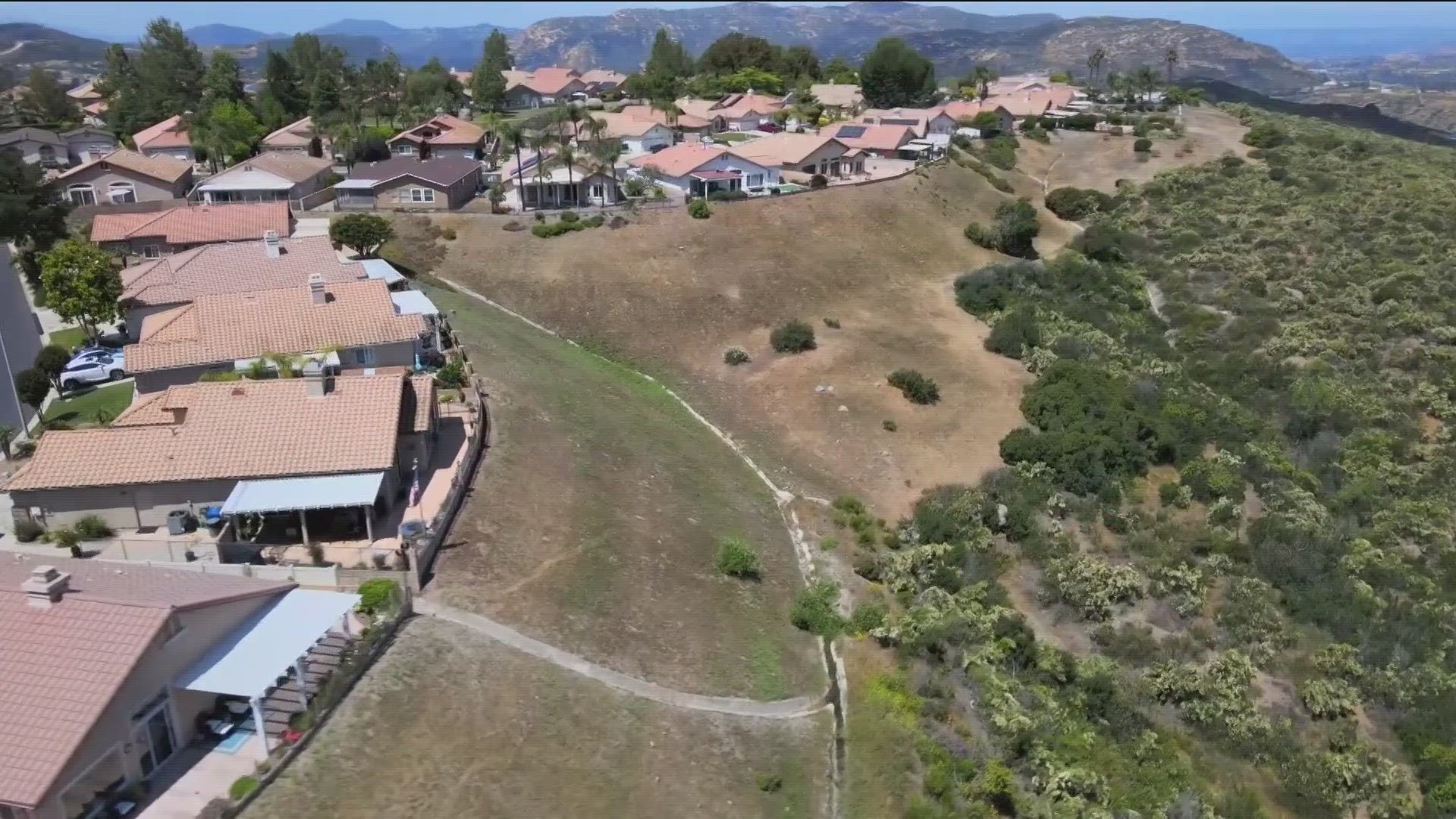SAN DIEGO — “Zone Zero” is a new defensible space requirement for homes in very high fire risk areas, according to California law.
CBS 8’s Brian White rode along with Fire Marshal Jason McBroom with the Alpine Fire Protection District to learn more.
“Defensible space affects everyone, so one weak link in the chain will create a domino effect,” said McBroom.
In the Crown Hills neighborhood, which had been ravaged by the Cedar Fire in 2003, McBroom pointed out the do’s and don’ts of defensible space and wildfire protection.
“These bushes are within the footprint of zone zero, these bushes will have to come out,” said McBroom, referring to shrubs lining the walkway of a home.
“Zone Zero,” or the “Ember-free zone” refers to the first five feet around the perimeter of a home, business, or any structure, such as a detached garage or shed.
“The goal is to remove all the combustible vegetation that’s located directly within that first five-foot zone, which will increase the chances of surviving a wildland fire,” said McBroom.
Beyond five feet, bushes and shrubs are allowed under the law, but they can’t be taller than 18 inches.
“In the event this box hedge does catch fire, we don’t have flaming ignition directly against the home,” said McBroom, pointing to well-manicured hedges outside the five-foot zone. “Keep it free and clear of any dead leaf litter that’s underneath it and by maintaining it, we’re lowering the flame height.”
Proper types of vents around the side of your home are important for keeping embers out.
“These vents have been retrofitted with the appropriate ember-resistant vents,” said McBroom while pointing to Brandguard soffit vents on a home’s exterior.
Attic spaces are vulnerable to catching fire through old-style, quarter-inch, mesh screen dormer vents on the roof, so retrofitting them with modern ember-resistive ones could save your home.
“It captures embers as the embers enter through the screen, it has to go through a double-C channel, capturing those hot embers before they get into the combustible attic space,” explained McBroom.
Grant funding is available to homeowners for retrofitting vents through the Sunrise Powerlink Fire Mitigation Grant Program.
Hardening the landscape adjacent to your home by removing mulch and vegetation can make it much more defensible during a wildland fire.
“As the embers hit the exterior wall of the home, they’re going to fall down and they’re going to self-extinguish because there are no combustible materials to ignite here on this side,” said McBroom on the side of a home, which had no mulch or vegetation within five feet of the stucco wall.
Fire Marshal McBroom pointed out the open space behind a row of homes on Begonia Way, where he emphasized the critical importance of maintaining 100 feet of defensible space.
“This is where we’re going to be able to control those hazards by lowering the flames, by lowering the fuel growth, and being able to mitigate,” said McBroom. “When forward rate of spread from the wildland fire’s coming up the slope, it’s reducing the potential for direct flame impingement directly against the home.”
Senate Bill 63 applies to homes in very high fire hazard severity zones, as designated by Cal Fire on this Fire Severity Zone Map.
WATCH RELATED: Cal Fire sprays roadside retardant to prevent wildfires (May 2023).

